This entry of the Pottoka herd in Extremadura was contributed to Wild Equus by my mentor and founder of the Pottokas en Piornal project, Lucy Rees.


Species: Equus caballus
Subspecies/Breed/Type: Pottoka (Basque Pony)
Country: Spain
Region/Province/Range: Sierra de Tormantos, Piornal (Extremadura-Caceres)
Population type: Feral
Management Authority: Pottokas en Piornal
Estimated Population size: about 40 horses (2015)
Census August 2015
Foals 2015 m 5 (+ 1 that died) f 3
Yearlings m 4 (b, 3n) f. 3 (d, 2n)
2 y-olds m 1 (b) f 4
3 & above m 5 (b, 4s) f 15
Total 40, m 15, f 25
b= bachelor, s=stallion, n= still with natal band, d=dispersed – 9/15 mares foaled. = 60%.
Of the 6 that did not foal, 4 were 3 y-o that foaled last year at 2, 1 is 3 y-o, 1 unknown (mare not seen for 3 months)


Details of Population
1200ha. of mountain between 700m and 1500m. , with two deep gorges. Lower-lying areas are oak wood (about 400ha) with scattered chestnut plantations, the latter mainly unavailable to the ponies. The rest is mainly high, dense heather, Spanish broom, bracken and rock, with occasional areas of grass.
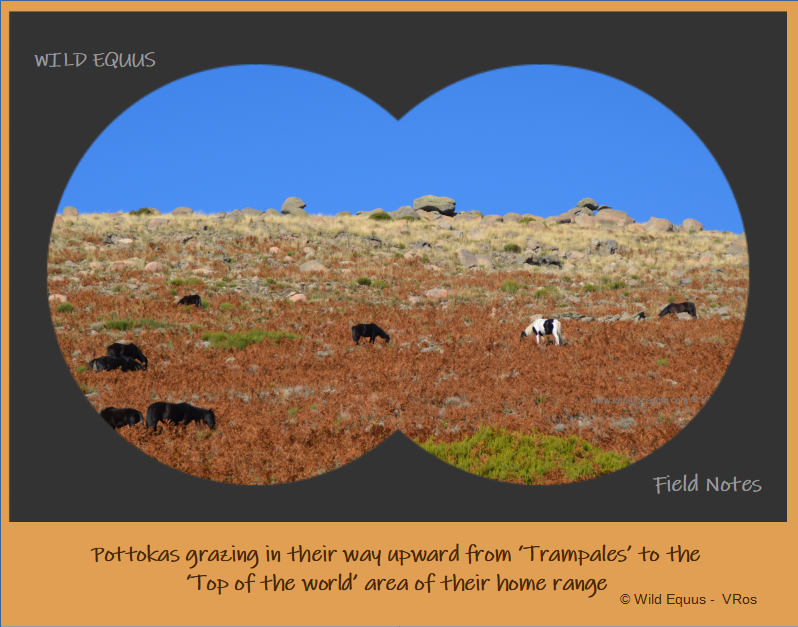

Average winter temperature 2.8º; snow may cover areas over 1000m for up to a month. Average summer temperature 20.8º . Water is abundant except in dry summers when all but two springs may dry up. The ponies practice seasonal vertical migration.
The area may also be grazed by up to 600 goats. Occasional red deer, groups of fallow deer, wild boar, fox, martin, jineta, rabbits (few), walkers and cyclists share the area. No large predators.
The population was set up as an open-access study facility for equine researchers and students with non-invasive projects. All ponies can be identified individually and their life history is known. Pottokas are Basque ponies whose DNA variation corresponds to a wild, not domesticated breed. Ours have no management except culling to limit numbers.
Their social organization corresponds to other older feral populations: natal bands, home ranges (around 300ha.), natal dispersal, bachelor bands often joined by dispersing fillies. Three have tamed themselves but the rest cannot be touched although they admit close observation.

Population growth has been limited by culling. In 2014 one entire band (young stallion, old mare, her daughter and grand-daughter) were removed. In 2015 11 ponies (3 y-o stallion, 7 y-o mare, her yearling son, and 7 fillies of 1 and 2 years old were removed). The individuals were chosen to minimize social disruption, being mostly fillies in natal dispersal. To reduce possible conflicts each band was rounded up separately and the youngsters removed.
Despite apparent lack of good forage the ponies are in extremely good condition although lactating mares lose weight at the end of the summer. The ponies show an astonishing ability to self-heal even severe wounds. Parasite burden is negligible.
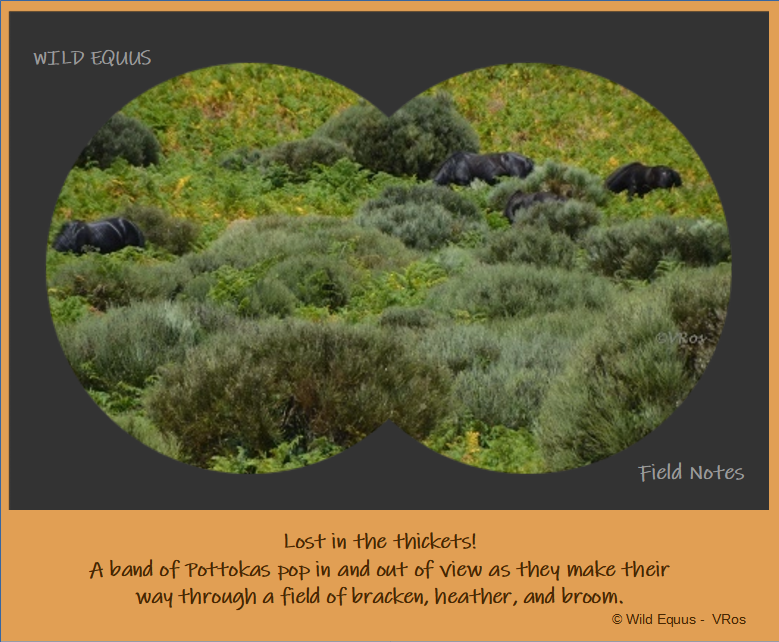
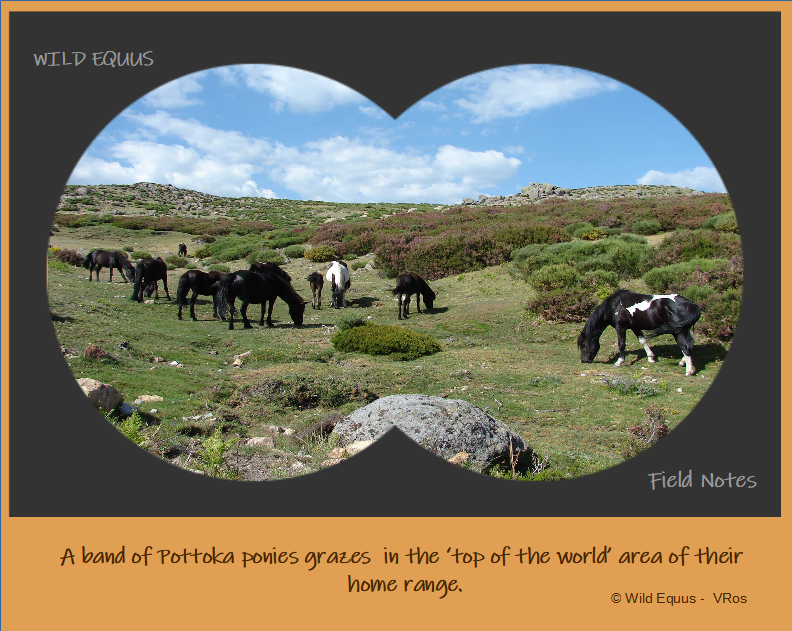
Structure and demographics
4 single-stallion natal bands, one bachelor band.
The population was set up in 2007/8 in Catalonia with two bands each of one stallion and three mares. On moving the population to its present location in 2011, a 3 year-old unrelated stallion was introduced.
Of the 11 foals conceived in Catalonia 9 were female. In Extremadura 20 colts and 19 fillies have been born.
Mortality:
12 y-o mare, piroplasmosis (Catalonia, 2007)
colt 6 months killed by hippies (c, 2008)
14 y-o stallion, infection from broken tooth (Extremadura, 2014)
12 y-o mare, herbicide poisoning (Extremadura, 2013)
yearling colt, eating plastic bag (E, 2014)
foal 3 weeks (E. 2015)
2 disappeared colts.
About half the fillies become pregnant as yearlings, giving a very fast-growing, female-skewed population (see culling, below). Fillies that foal at 2 do not foal at 3. Colts begin (inefficiently) to form natal bands at 3 years old.
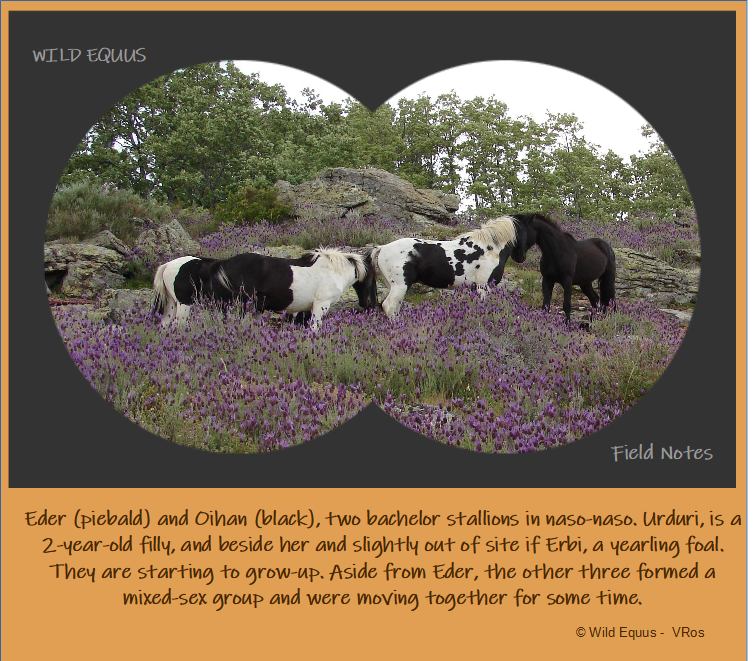
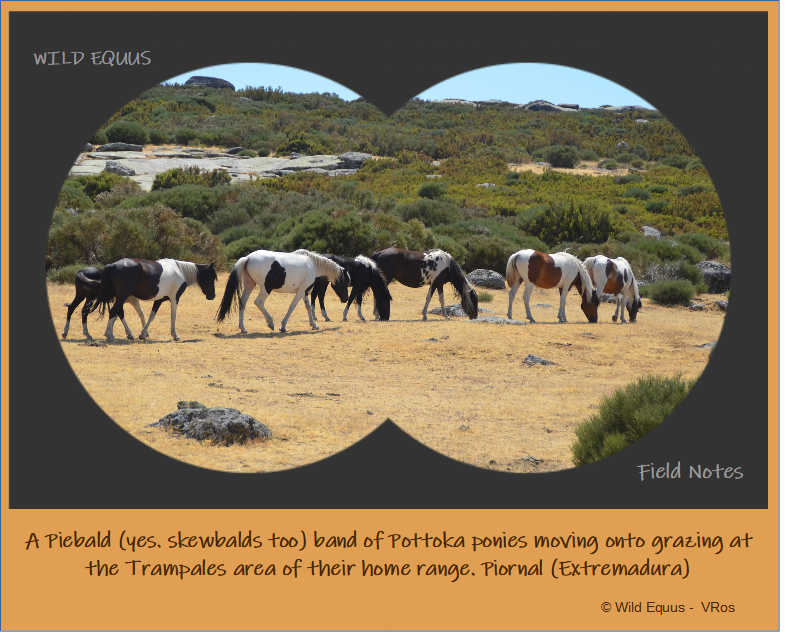
Issues worth noting and needed actions
a) Legal imperative to microchip, which causes stress and social disruption and is extremely difficult in practice. The European regulations allow exemption in wild or feral ponies but the Extremadura authorities do no recognize this.
b) Damage to fences and walls caused by herds of goats, whose owner refuses to use the gates, cause escapes, social disruption and conflicts with the police.
Bibliography and further reading
Genetic analysis in the basque pony-pottoka breed. Preliminary results
Genetic variability in two spanish horse populations: Preliminary results
Pottoka’s behaviour and training
El caballo al final de la última glaciación en el período postglacial
This is an ongoing work, and as such, will be updated regularly as new information is made available.


